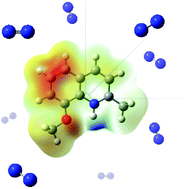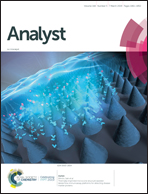A parallelized molecular collision cross section package with optimized accuracy and efficiency†
Abstract
Ion mobility-based separation prior to mass spectrometry has become an invaluable tool in the structural elucidation of gas-phase ions and in the characterization of complex mixtures. Application of ion mobility to structural studies requires an accurate methodology to bridge theoretical modelling of chemical structure with experimental determination of an ion's collision cross section (CCS). Herein, we present a refined methodology for calculating ion CCS using parallel computing architectures that makes use of atom specific parameters, which we have called MobCal-MPI. Tuning of ion-nitrogen van der Waals potentials on a diverse calibration set of 162 molecules returned a RMSE of 2.60% in CCS calculations of molecules containing the elements C, H, O, N, F, P, S, Cl, Br, and I. External validation of the ion-nitrogen potential was performed on an additional 50 compounds not present in the validation set, returning a RMSE of 2.31% for the CCSs of these compounds. Owing to the use of parameters from the MMFF94 forcefield, the calibration of the van der Waals potential can be extended to additional atoms defined in the MMFF94 forcefield (i.e., Li, Na, K, Si, Mg, Ca, Fe, Cu, Zn). We expect that the work presented here will serve as a foundation for facile determination of molecular CCSs, as MobCal-MPI boasts up to 64-fold speedups over traditional calculation packages.



 Please wait while we load your content...
Please wait while we load your content...